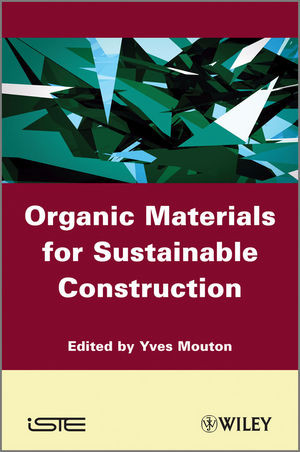Organic Materials For Sustainable Construction Yves Mouton by Yves Mouton 9781118616734, 9781848212244, 1118616731, 1848212240 instant download after payment.
This book provides an inventory of organic materials and products, the major components of all civil engineering projects, in terms of their scientific and technical background, including the regulations that cover their use and their predicted useful life. Such materials include: bitumen on the roads; geotextiles for retaining walls; membranes for bridges; tunnel and reservoir waterproofing; paint binders to protect metallic and concrete structures or to realize road markings; injection resins; gluing products; concrete admixtures; and composite materials.
The presentation is based on a physicochemical approach, which is essential if these products are to be considered as part of sustainable development: as such, those studying or working in these fields will find this an invaluable source of information.
Content:
Chapter 1 Organic materials used in Construction at the Dawn of the Third Millennium (pages 1–14): Michel De Longcamp and Yves Mouton
Chapter 2 Sustainable Development Issues Regarding Organic Materials used in Civil Engineering (pages 15–36): Agnes Jullien
Chapter 3 Health Risks of Organic Materials used in Construction (pages 37–50): Guy Auburtin
Chapter 4 Ecological Impacts of Organic Construction Materials (pages 51–62): Yves Perrodin
Chapter 5 Organic Polymers (pages 63–120): Jacques Verdu and Bruno Fayolle
Chapter 6 Formulation of Plastics (pages 121–130): Michel de Longcamp
Chapter 7 Ageing and Durability of Organic Polymers (pages 131–178): Jacques Verdu and Bruno Fayolle
Chapter 8 Fireproofing polymeric materials (pages 179–188): Serge Bourbigot
Chapter 9 Organic Materials, Waste and Recycling (pages 189–202): Vincent Verney
Chapter 10 Geosynthetics and Waterproofing (pages 203–268): Philippe Mestat
Chapter 11 Waterproofing Buildings (pages 269–282): Gerard Hemond
Chapter 12 Elastomers and Rubbers used in Civil Engineering (pages 283–312): Michel Fragnet
Chapter 13 Composite Materials and Construction (pages 313–338): Jean?Francois Caron
Chapter 14 Textile Materials (pages 339–352): Bernard Maurin and Romain Ferrari
Chapter 15 Wood (pages 353–388): Remy Mouterde
Chapter 16 Bitumen, Road Construction and Sustainable Development (pages 389–406): Bernard Lombardi
Chapter 17 Industrial Mortars and Repairing Concrete Products (pages 407–418): Pierre Boulanger and Paulo Goncalo
Chapter 18 Waterborne Paints to Limit VOC Emissions (pages 419–430): Emmanuel Aragon and Andre Margaillan
Chapter 19 Rheological Admixtures (pages 431–446): Nicolas Roussel
Chapter 20 Contributions of Organic Admixtures in Construction Processes (pages 447–456): Francois Cussigh
Chapter 21 Organic Fibers in Cementitious Materials (pages 457–482): Laetitia D'Aloia?Schwartzentruber
Chapter 22 Adhesive Bonding, a Method for Construction (pages 483–501): Thierry Chaussadent
Chapter 23 Strengthening Concrete Structures by Externally Bonded Composite Materials (pages 503–528): Marc Quiertant
Chapter 24 Durability of FRP Strengthened Concrete Specimens under Accelerated Ageing (pages 529–552): Karim Benzarti, Marc Quiertant, Sylvain Chataigner and Christophe Aubagnac
Chapter 25 Characterization of Organic Materials used in Civil Engineering by Chemical and Physico?chemical Methods (pages 553–582): Fabienne Farcas
Chapter 26 Organic Materials and Sustainable Architectural Design (pages 583–598): Michel Paulin
Chapter 27 Specific Contributions of Viscous Behavior Materials in Construction (pages 599–607): Bernard Halphen
Chapter 28 Organics in Construction – How Far? (pages 609–616): Henri Van Damme
Chapter 29 Thoughts on the Futurology in Research and Development of Innovative Materials (pages 617–630): Jean Billard


